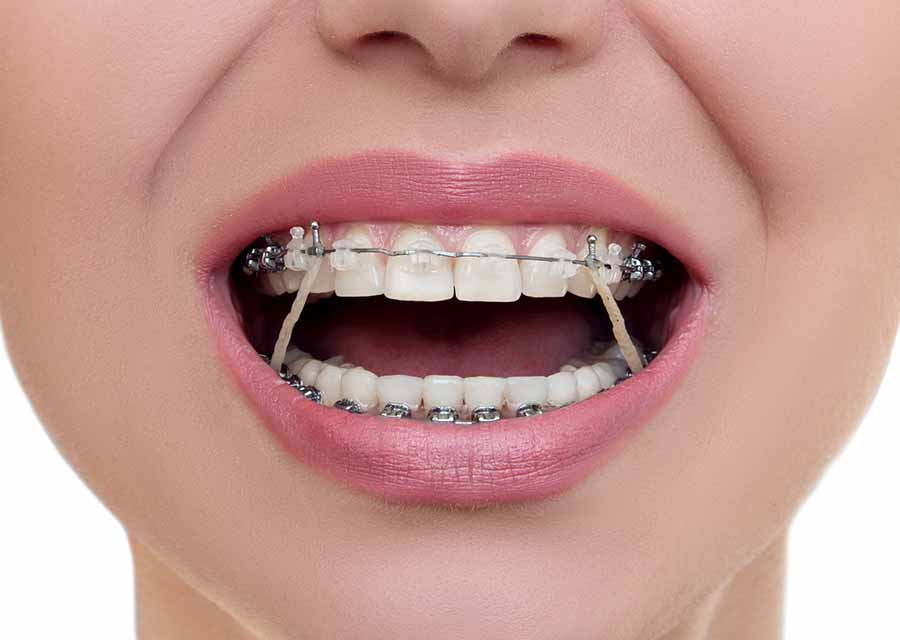Legacy Orthodontics - Questions
An orthodontist is a dental expert trained to identify, avoid, and treat teeth and jaw irregularities. Orthodontists work with individuals of all ages, from children to grownups.
Malocclusion, or misaligned teeth, can lead to dental concerns, including dental cavity, gum disease, and hard or unpleasant eating. Not everyone is born with straight teeth. If you have a poor bite or big areas in between your teeth, you might intend to get in touch with a dental expert concentrating on orthodontic treatment.
The 10-Minute Rule for Legacy Orthodontics
( Picture Credit: DigitalVision/Getty Images) Orthodontists use dealt with and detachable oral tools, like braces, retainers, and bands, to alter the position of teeth in your mouth. Orthodontic therapy is for oral problems, consisting of: Crooked teethBite troubles, like an overbite or an underbiteCrowded teeth or teeth that are as well far apartJaw misalignmentThe objective of orthodontic treatment is to boost your bite.
A healthy bite guarantees you can consume, eat, and talk effectively. While you might assume of orthodontists as primarily for kids or teens who require braces, they can fix dental issues at any age. Orthodontists participate in university, dental college, and orthodontic school. After college graduation, they invest 2 or 3 years in an orthodontic residency program.
, yet not all dentists are orthodontists. They concentrate on 2 areas: How to properly and safely relocate teeth Just how to effectively guide growth in the teeth, jaw, and faceOnce an orthodontist has finished training, they have the choice to end up being board licensed.
The Ultimate Guide To Legacy Orthodontics
Misalignment, or malocclusion, is the most common reason people see an orthodontist. It is genetic and is the result of dimension distinctions in between the top and lower jaw or between the jaw and teeth. Malocclusion leads to tooth congestion, an askew jaw, or irregular bite patterns. Malocclusion is typically treated with: Your orthodontist affixes steel, ceramic, or plastic square bonds to your teeth.
If you have just minor malocclusion, you may be able to utilize clear dental braces, called aligners, rather than traditional dental braces (https://www.blogtalkradio.com/legacyortho). Some individuals you could check here require a headwear to aid relocate teeth into line with pressure from outside the mouth. After dental braces or aligners, you'll need to put on a retainer. A retainer is a custom device that maintains your teeth in place.
They're usually used on children. They can create added area in the mouth without having to pull teeth. If you have a major underbite or overbite, you could require orthognathic surgery (also called orthodontic surgery) to extend or reduce your jaw. Orthodontists utilize cords, medical screws, or plates to sustain your jaw bone.
You might need to see an orthodontist if you have: Crowding or not adequate space for all of your teethOverbite, when your top teeth come by your base teethUnderbite, when your base teeth are also much forwardSpacing or problems with gapsCrossbite, which is when your upper teeth fit behind your base teeth when your mouth is closedOpen bite or a vertical space between your front base and upper teethMisplaced midline, when the center of your base and top teeth don't line up Fixing an oral malocclusion can: Make biting, eating, and talking easierImprove the symmetry of our face and your overall appearanceEase pain from temporomandibular joint problemsDifferent your teeth and make them less complicated to cleanse, helping stop dental caries or tooth cavities It's frequently a dental expert who first notifications misaligned teeth throughout a routine test.
The Of Legacy Orthodontics

During your initial orthodontic appointment, you'll likely have: An oral examPhotos taken of your face and smileDental X-raysPanoramic (360 level) X-rays of your face and headImpressions to develop molds of your teethThese examinations will certainly help your orthodontist know exactly how to wage your treatment. invisalign. An orthodontist is a dental practitioner who's had training to treat your teeth and jaw
Orthodontists may execute surgical treatment, exams,X-rays,and even more to aid you obtain a more comfy, healthier smile. An orthodontist is concentrated on your bite, so something like a chipped tooth would certainly be dealt with by a dental practitioner. Orthodontists are dental practitioners yet not all dental professionals are orthodontists. Orthodontists are concentrated on your bite, or the method your teeth meshed, and the straightness of your teeth.
Ever before asked yourself exactly how celebrities always seem to have completely aligned teeth? The answer usually depends on the knowledgeable hands of an orthodontist. However just what does an orthodontist do? Orthodontists are dental professionals that concentrate on correcting abnormalities in the teeth and jaws. Their competence exceeds just developing a beautiful smile; it encompasses enhancing your total dental health and function.
Legacy Orthodontics - Questions

While braces are one of the most frequently identified orthodontic therapy, orthodontists have a varied toolkit at their disposal. The specific technique selected relies on the severity of the situation, the individual's age, and individual choices. These reliable dental braces make use of a system of brackets adhered to the teeth and linked by cables.
Clear aligners, like Invisalign, are a preferred choice for people seeking a much more discreet treatment alternative. These removable trays are personalized to considerably change the teeth's position. Headwear may be used in combination with braces or aligners to apply added targeted pressures, particularly for correcting jaw inconsistencies. In cases of narrow jaws, palatal expanders can be utilized to create room for correct tooth alignment.
Comments on “The Main Principles Of Legacy Orthodontics”